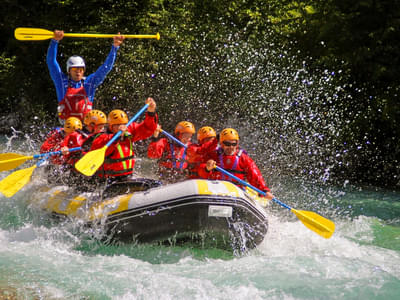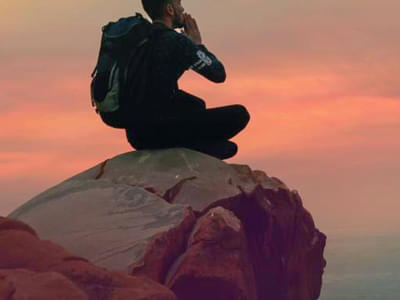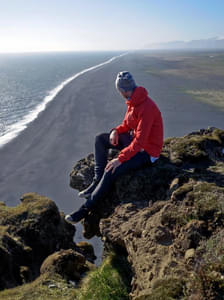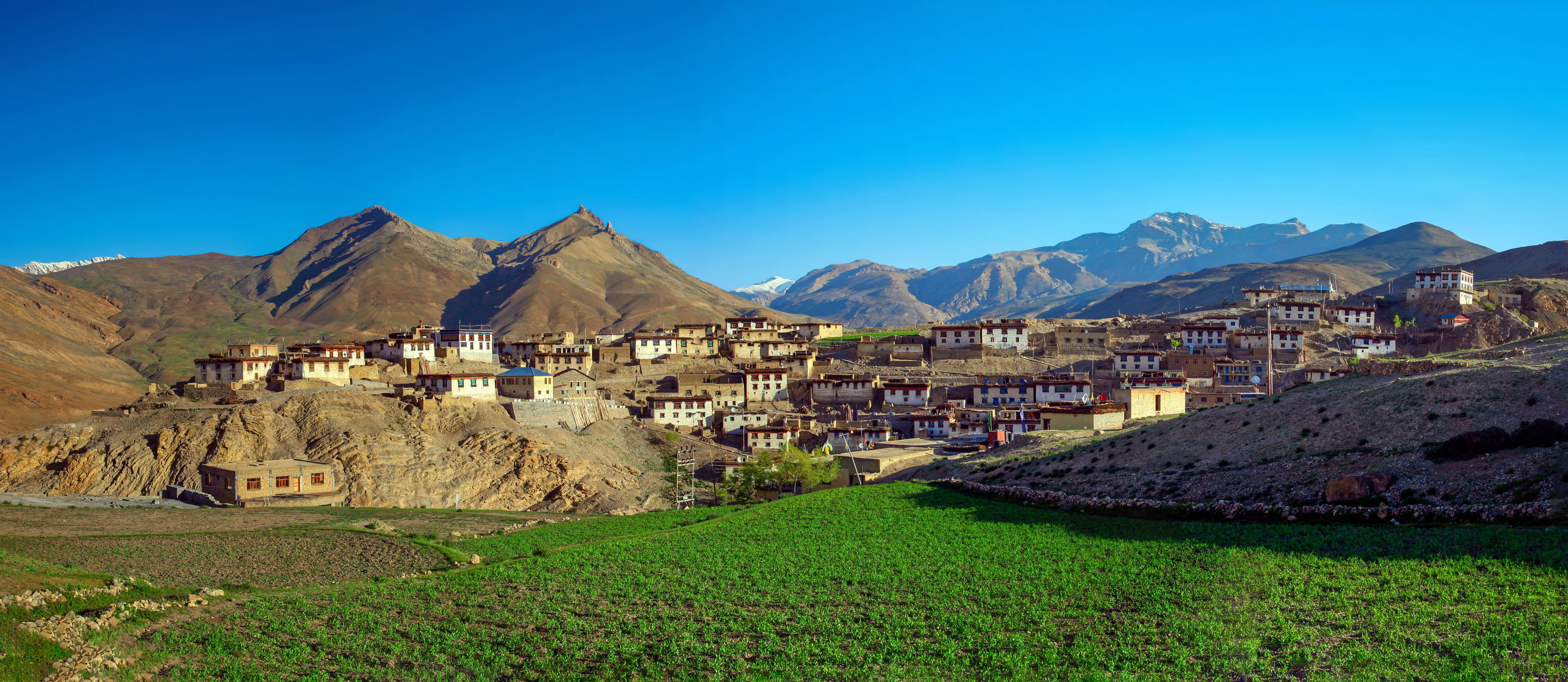Kibber is a village located in the Spiti Valley of Himachal Pradesh at an elevation of 4270 meters. This village is surrounded by stunning mountains and landscapes. The Tibetan-style houses in Kibber, built with stone and bricks, are impressive to see. The village's landscape is unique in the Spiti Valley, featuring fertile fields that yield abundant crops, even for trading. Also called Kyibar, it is famous for the Kibber Wildlife Sanctuary and the Kibber Monastery.
Kibber is a picturesque little village on the higher regions of Spiti Valley in Himachal Pradesh. Also known as Kyibar, Kibber is known for the Kibber Monastery and the Kibber Wildlife Sanctuary. This small, recluse village is made of only 80 houses with approximately 366 residents. If you're planning to explore the charms of Kibber and other hidden gems of the Spiti Valley, consider adding it to your Spiti packages for an authentic Himalayan experience.
Standing at a height of 4270 metres, Kibber is known as the highest motorable village in the world. Surrounded by the Himalayas, this village attracts a large number of tourists every year for trekking and mountaineering. It is also a preferred camping destination during summers.
Barter is still an active mode of commerce in Kibber. Villagers continue to take travel on the trade route, a three-day journey, from Parang La to Ladakh to barter their horses for yak or sell them for cash. The houses in this village are its most unique feature. Identical to look at, all the houses are made of stone instead of the adobe brick that is used in other parts of Spiti Valley. Even though remote in location, Kibber has its own dispensary and hospital, school, post office, telegraph office, and a community television set.
Transportation is a challenge in Kibber due to underdeveloped roadways. You can avail the regular bus service that connects Kibber to Kaza or travel by shared taxi. But it is advisable to have your own mode of transport if you don’t intend to walk. But with all its limitations, Kibber is a must-visit for all the surrounding mountain range, green meadows, and all its natural beauty.
Highlights
• Visit the Kibber Wildlife Sanctuary where you will see rare wildlife species like the Snow Leopard, Blue Sheep, Ibex, and Tibetan Wolf.
• Plan a thrilling trek on your trip as Kibber is the starting point for the famous Parang-La trek.
• Explore the Tibetan Buddhist scriptures, paintings, and rare artefacts inside the Kibber Monastery.
• Witness the beauty of the snow-peaked Himalayas, offering a perfect sight for photographers and nature lovers.
• Experience stargazing in Kibber, where its high altitude and minimal light create perfect conditions for observing the night sky.
How To Reach
By Road: Kibber can be reached by road from Kaza. There is a local bus from Kaza to Kibber that starts at 5 pm everyday and reaches Kibber in an hour. After an overnight halt, the same bus returns to Kaza in the morning. During peak tourist season, they may run a second bus service in the morning, depending on demand.
You can also hire a cab or take a shared taxi that will bring you to Kibber. Since this is an additional source of income for the villagers, they may ask for high prices. Don’t forget to bargain to get the best price.
Best Time To Visit
Best month to visit
Summer months of May to July are the best time to visit Kibber, and as an extension, Spiti Valley. The weather, although cold, is pleasant. This is the ideal time for sightseeing and trekking. Avoid coming in the winter months as the temperature drops below zero, and roads may be shut down for months.
Carry a light jacket and umbrella as rain is unpredictable in this region. We recommend avoiding monsoons as high amount of rainfall often leads to landslides and accidents. In addition, since this is a mountain area, roads become even more difficult to navigate during the rains.
Other Essential Information
Location: Lahaul and Spiti District.
Distance from Spiti: 18.4 kms (40 minutes approximately)
Distance from Manali: 185.5 kms (4 hours 50 minutes approximately)
Mobile Connectivity: Poor.
Temperature: 11.5 °C (average temperature during summers), -9.5 °C (average temperature during winters)
Historical significance of Kibber
Just like the rest of the Spiti Valley, Kibber also follows Tibetan Buddhism. The religion holds a special significance for the people of this village because Serkong Rinpoche, teacher of current Dalai Lama, lived here in his last years in the 80s.
Kibber also has an ancient trade route between Parang La and Ladakh. This trade route was the primary means of trade and livelihood for the nomadic tribes of Changthang (Ladakh) and the residents of Spiti. Barter system was the primary mode of commerce. The annual festival of La Darcha was the main time and spot for the trade of horses, yaks, and edible items. Villagers of Kibber continue to use this trade route for business and travel.
Another significant attraction of Kibber is fossil hunting. The neighbouring village of Langza is more popular when it comes to finding and studying fossils. But finding an ammonite or marine fossils in Kibber is not unheard of due to its proximity to the Himalayan range.
Kibber is surrounded by monasteries, a testimony to the Tibetan Buddhist history of the village. Primary amongst these are the Kibber Monastery and the Key Monastery, the largest monastery of Spiti Valley. The monks are a delightful resource of stories of Tibetan history and culture.
Kibber Weather
The weather in Kibber is cold and temperate throughout the year. Kibber receives a large amount of rainfall. Even in the driest month Kibber witnesses’ days of rainfall. On an average, the year-round temperature is about 1.6 °C, with nearly 518 mm of average rainfall.
July is the warmest month of the year, while January is the coldest. November is the driest time of the year and August has maximum precipitation. Temperature in Kibber can drop to as low as -9.5 °C, blocking all roadways, and bringing this small village to a standstill.
Where to Stay in Kibber
Although a remote village, Kibber receives a high number of tourists every year. There are a number of pocket-friendly hotels and homestays in Kibber village that provide all basic amenities. They also help tourists plan sightseeing trips and mountain treks.
1. Norling Home Stay: One of the most popular home stays in Kibber, Norling Home Stay offers rooms with all modern amenities. The rooms provide beautiful views of the Kibber village and Rhino Khaplang peaks. The roof-top terrace is the ideal place to enjoy the early morning and twilight view. Norling Home Stay also has a house physician on call, a must-need facility in a remote area. If you are looking for additional adventure, speak with the owners. They can help organise snow leopard sighting, Kanamo Peak trek, and Parang La trek.
2. Deshek Home Stay: Standing in the heart of Kibber village, Deshek Home Stay is right opposite the local high school. Built into three floors, each floor has an independent terrace where you can sit and enjoy the view. The home stay provides all basic amenities. Enjoy the warm hospitality, and the delicious cooking of the local family that runs the home stay. They can help you organise short and long treks around Kibber.
3. Kanamo Home Stay: With a breath-taking view of the Spiti Valley from every room, Kanamo Home Stay is preferred by trekkers due to its proximity to trekking points and its location. Equipped with all modern facilities, Kanamo Home Stay also provides home-cooked, Spitian meals.
4. Zostel: This new and upcoming staying option is perfect for the modern traveller. Equipped with all modern facilities and food arrangements, Zostel is the ideal choice for backpackers, trekkers and solo travellers. Camping and bonfires are allowed, depending on the weather condition. If requested in advance, they can arrange for pick-up and drop to nearby locations.
Where to Eat in Kibber
All home stays in Kibber provide home-cooked food, using local, organic produce. Thanks to centuries of cohabitation, the local cuisine is a healthy mix of Himachal and Tibetan dishes. And due to harsh weather conditions, the locals have invented dishes that can easily be made from whatever is available. But if you are out sightseeing, and wish to taste some local delicacies, try these places.
1. Tashi Zom Guest House: This is the first place that you will spot as soon as you enter Kibber village. Food cooked with local produce, Tashi Zom has an open restaurant that serves even those who are not staying at the guest house. Peas, potatoes and barley are the most important local produce. So, most of the dishes served here use these three as primary ingredients and all the food is prepared from scratch. Relax and enjoy nature while you wait for your order.
2. Norling Guest House: Another place with a public restaurant, Norling is run by a local family. And they cook for the guests what they eat in their own home. If you want to find out what Kibber villagers eat in their houses, this is the best place to find out. Along with local delicacies, they also serve Italian, Continental, and other Indian dishes. But we recommend that you stick to the local cuisine.
3. Serkong Homestay & Café: Boasting of the highest rooftop in the entire Spiti Valley, Serkong is ideal to eat with a large group of friends or your family. This is also a good place to bring children as they serve both local dishes, and kid-friendly food.
4. Rainbow Guest House & Restaurant: Rainbow is a good place to stop when out sightseeing. This small, cosy place offers home-cooked meals, including some Tibetan delicacies. Their outdoor seating arrangement is perfect if you want to enjoy your meal surrounded by a picturesque location. An attached confectionary makes it easy to get eatables for the road.
Things to know before visiting Kibber
There are certain things you should know before visiting Kibber.
1. This is a high-altitude mountain area.
2. Roadways are not well-developed. Walking is a great alternative.
3. This is a good spot for trekking.
4. The wind is always a little chilly in Kibber. It is best to carry a warm jacket.
5. Since this is an isolated village, we recommend you carry your own medicines, if needed any.
6. Kibber has a high school, a hospital, a post office, and a telegraph office.
7. Kibber experiences extremely harsh winters.
8. If planning to trek or camp, carry your own gear.
9. The villagers are hospitable. If you don’t find a place at a home stay, you could easily spend the night at one of the families.
Explore the Kibber Wildlife Sanctuary
You can visit Kibber Wildlife Sanctuary for a unique adventure in Kibber. The sanctuary covers 1,400 square kilometers and it is the only one in India that is home to high-altitude species. These include Snow Leopard, Golden Eagle, Blue Sheep, Ibex, Red Fox, and Tibetan Wolf. The area has slight vegetation and some rare medicinal plants, including at least 8 endangered species like Ephedra and Roundleaf Monkshood. It is also a great place for hiking and wildlife spotting.
Visit the Kibber Monastery
The Kibber Monastery features a spectacular blend of Indian and Tibetan architecture. Its main prayer hall houses a 600-year-old statue of Maitreya Buddha. The monastery hosts religious ceremonies and festivals, including the Chaam dance, a masked performance by monks. It includes a library, courtyard, and meditation rooms. Surrounded by stunning landscapes, it is also a favourite resting spot for tourists and trekkers in Spiti Valley. You can join meditation sessions and discover the region's history and culture in the Monastery.
Plan a trek from Kibber
The famous Parang-La trek starts from the Kibber village and ends at Korzok Village next to the Tso-Moriri lake. This trek follows the course of the Pare Chu River to Karzok Village. During the trek, you will witness diverse landscapes like gorges and mountain plateaus. The route of the trek is filled with rare species of fauna like Tibetan Wolf, Himalayan Chough, and Snow Pigeon.
With its numerous trails and breathtaking views, Kibber attracts trekkers seeking adventure and discovery.
Camping and Stargazing
Kibber is ideal for camping as it has numerous serene spots and sites from which you can marvel at the mountains and the scenery. Camping in Kibber also allows you to enjoy the beautiful starry sky at night. With its high altitude, minimal pollution, and clear skies, this village is perfect for observing the night sky, constellations, and photography. You can set up a campsite at a secluded spot to enjoy uninterrupted views of the stars. Also, you may be fortunate enough to see some shooting stars.
Explore the local culture and interact with locals
Because of the impact of both Indian and Tibetan traditions, Kibber culture and way of life are distinct as well as fascinating. The majority of residents are Gelugpa sect members of Tibetan Buddhism. Throughout the year, they celebrate several festivals, including Gochi (Winter Festival), Chakhar (Harvest Festival), and Losar (Tibetan New Year). Additionally, the locals are known for their kindness and friendliness. They greet the guests with open arms and provide food and accommodation with a heart full of best wishes.
Tourism Board Alliances
Kibber FAQs
How can I go to Kibber village from Delhi?
It is best to secure all necessary permits in advance, and check the weather conditions before you travel. The second route is via Shimla. Take a bus or a flight from Delhi to Shimla. You can also travel via train but you will need to switch trains at Chandigarh. Once in Shimla, you can hire a cab that will take you directly to Kibber. Or you can take a bus till Kaza, and then take a bus or a cab to Kibber.
At which height from sea level is Kibber situated?
In which district is Kibber situated?
Kibber Reviews







